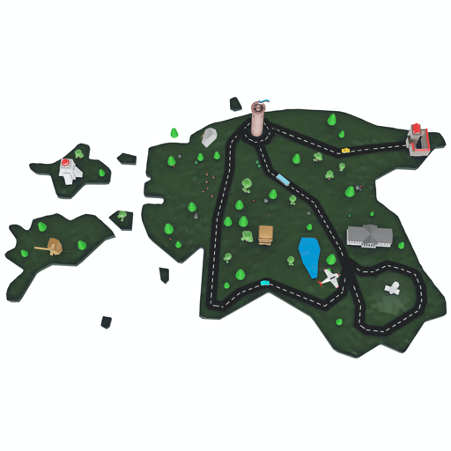Augmented Reality Game for Kindergartens and Primary Schools
On this page, you'll find playing cards for a new and exciting augmented reality game, which you can activate with a smart device.
T
The aim of the game is to introduce children to and pique their interest in Estonian symbols and nature by combining the real and virtual worlds, i.e. creating augmented reality. With augmented reality, the computer-generated virtual objects are layered directly onto the real world with a smart device so the user sees a combination of the virtual and real worlds with their device.
To play the games, print out the playing cards and read the descriptions below. The playing cards are the size of a credit card and both sides are used. There is a code for activating the augmented reality object on one side of the card and questions about the object on the other. Click here to see some examples of possible answers to the questions. If you're unable to print out the playing cards, activate the augmented reality objects on this page using the codes below. The game descriptions provided here presume that the participants are using playing cards, but you can always make adjustments.

Example of a playing card: Estonian map
Please note that augmented reality only works with certain smart devices. Make sure that your device is one of them (see the list of Android devices and Apple devices that support augmented reality). Also, read the instructions on how to display the augmented reality objects using a smart device and a playing card. If you have any suggestions on how to further develop these games, e-mail us at eduspace@tlu.ee.
*Instructions on how to activate augmented reality*:
Click on the blue button to open the pop-up window for scanning the code. Use a smart device with an Apple or Android operating system, open the camera application and direct the camera to the QR code. Wait until the camera recognises the code and displays a browser link at the top of the screen. Click on the link. At the top of the page, choose the option 'AR' if you'd like the object to be layered onto your real-world surroundings or the option 'Object' if you'd like the object to be displayed on a grey background. In AR mode, an instruction will then appear on the screen to help the user find a suitable place to activate the object in the room. Once the object has appeared, the user can make it bigger or smaller on the screen, move around with it and display it on various backgrounds in the room. If you take a photo with the camera, the object is also captured. When you wish to stop, close the application at the top left corner.
*A list of Android devices and Apple devices that support augmented reality.
Click here to print out the playing cards
The idea and execution of the learning activities: Tallinn University School of Educational Sciences, EDUSPACE, EXU and Mobi Lab. The activities have been financed by the research fund of the Tallinn University School of Educational Sciences.
Descriptions of games and activities
1. Riddle me, riddle me, what could it be?
Click here to open the description of the game
2. Find the card!
Click here to open the description of the game
3. Story time
Click here to open the description of the game
4. Orienteering
Click here to open the description of the game
5. Learning activity 'Know Estonia'
Click here to open the description of the game
Ideas for developing the game
Each player has their own augmented reality card. Players form pairs and compare their objects together, finding similarities and differences between the two.
Each player has their own augmented reality card. Players form pairs and examine the virtual object from the card of one player. One player asks questions about the object and the other tries to answer them. The players switch roles and examine the object on the other card in the same way.
Each player has their own augmented reality card. The player looks at their virtual object, places it somewhere in the room and takes a photo of the object in that location. The player then finds themselves a partner to whom they will describe the photo they took. The partner tries to draw what they hear and later they compare the drawing to the photo.
The players should take photos of the virtual object on different backgrounds, making sure that it is sometimes in front of, behind, under, above, to the left or to the right of another item. The photos will be printed out and put together to create a mat for Bee-Bot. The robot is then programmed to find objects in different or similar places. Another option is to create a short story and program Bee-Bot or Blue-Bot to follow the sequence of events on the mat.
Each player has their own augmented reality card. There is a recordable peg with some recorded questions attached to each of the cards. The child listens to the question and tries to answer it. If they don't know the answer, they can ask for help. Once they know all of the answers, they record the answers on the peg and pass it on to another child. The child listens to the answers and tries to guess what the questions were.
Activation codes for the cards
Gnat
Cornflower
Swallowtail
Tick
Tall Hermann
Swallow
Mole
School of fish
Sundews
Map of Estonia
